It is painfully obvious that Gaza urgently needs help. In the eleventh year of total blockade, the humanitarian crisis has long reached all aspects of life. Large-scale humanitarian assistance increasingly falls short of meeting basic needs. Therefore, strategic plans for a sustainable solution seem noble and pressing. But can this battered and beleaguered narrow strip of land possibly be turned into a sustainable entity?
Regarding Gaza’s water crisis, the prevailing narrative goes like this: In the most densely populated land on earth, cursed with an arid climate, catastrophic over-pumpage is leading to ever dropping water levels and seawater intrusion. The only solution is to enable Gaza to produce its own freshwater by seawater desalination, at 55 mcm/yr (>100 in the future). This will ensure, so the promise, that Gazans have a sustainable, reliable, affordable, safe, and independent water source of their own. Let’s take a brief look at this narrative.i
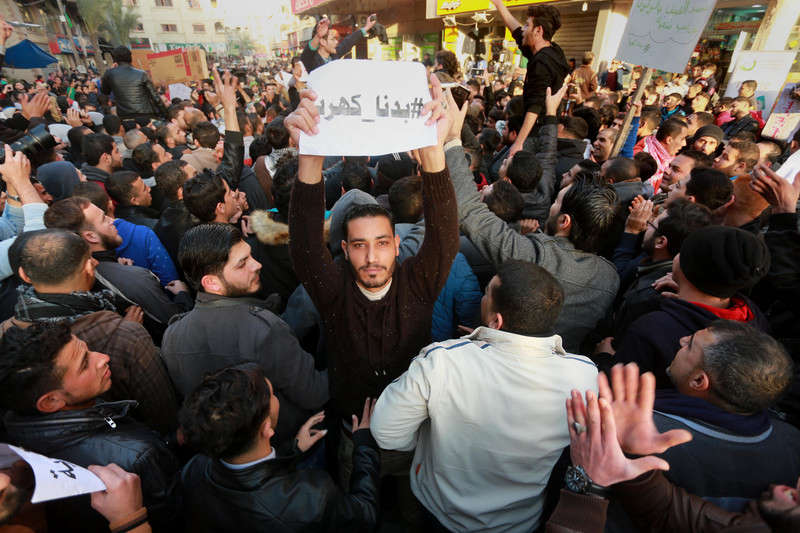
Gaza’s climate is semi-arid, not arid. Its average area groundwater recharge (97mm) is higher than that of neighboring Sinai (7mm) and Israel (49mm, due to its large Negev portion).
Demand must be met, but desalination, at best, will tackle only half the demand, drinking water (urgent), but not agricultural demand.
Abstractions must indeed be curbed, and desalination promises that it would indirectly accomplish this by providing more water. But currently, pumpage is dropping dramatically due to an entirely different factor, the harshly imposed power cuts – yet groundwater abstractions still remain far above the sustainable yield.
Indeed, receding water levels and seawater intrusions are neither unique to Gaza nor new in the Coastal Aquifer. Already in the mid-1950s, Israel was plagued by large areas with groundwater levels below sea level. Moreover, and little known, the largest salt source remains the natural lateral brackish groundwater inflow from the Negev (>37mcm and growing).
“Irreversibly damaged by 2016! – Uninhabitable by 2020!” – typical tabloid slogans published about the water malaise in Gaza
No doubt, receding water levels are alarming and must be addressed; over-pumpage needs to be reduced. But we should refrain from perpetuating over-simplistic pseudo-causalities; avoid false claims of exclusivism and uniqueness; and most importantly, eschew the sensationalist, false, and misleading claims that Gaza will become “uninhabitable by 2020,” which many sources, among them the United Nations, are spreading – no doubt with the best intentions (which, proverbially, pave the way to hell). Remember the former slogan that the damage to the aquifer would become “irreversible by 2016!” Has it been muted because the situation has improved? No! But the Armageddon year 2016 has passed, just as 2020 will pass. In the not-so-long(!) run, such false, sensationalist claims undermine and destroy the credibility of real advocacy as well as the struggle for freedom and life in dignity that is fought daily by millions of Gazans.
If any human standards apply to the human beings inside the Gaza cage – this strip has been uninhabitable for a long time. Since when has a ghetto, a cage, been inhabitable – ever?
The claim that Gaza is the most densely populated country on earth is false. If we regard Gaza as a state, then the “states” of Monaco and Macau have three and four times denser populations – but these are city-states! By contrast, the densest territorial state, which is Bangladesh, has only a quarter of the population density of Gaza. More importantly, why should we compare Gaza to territorial states, not directly to cities? With currently 5,324 inhabitants/km2, Gaza is not even among the top 50 most densely populated cities. For all practical purposes, especially regarding the question of securing resources, supplies, and sustainability, the entire Gaza Strip is simply a city – and an average one at that. Treating Gaza as a country or a state – let alone an independent state – is a grave mistake, both technically and politically.
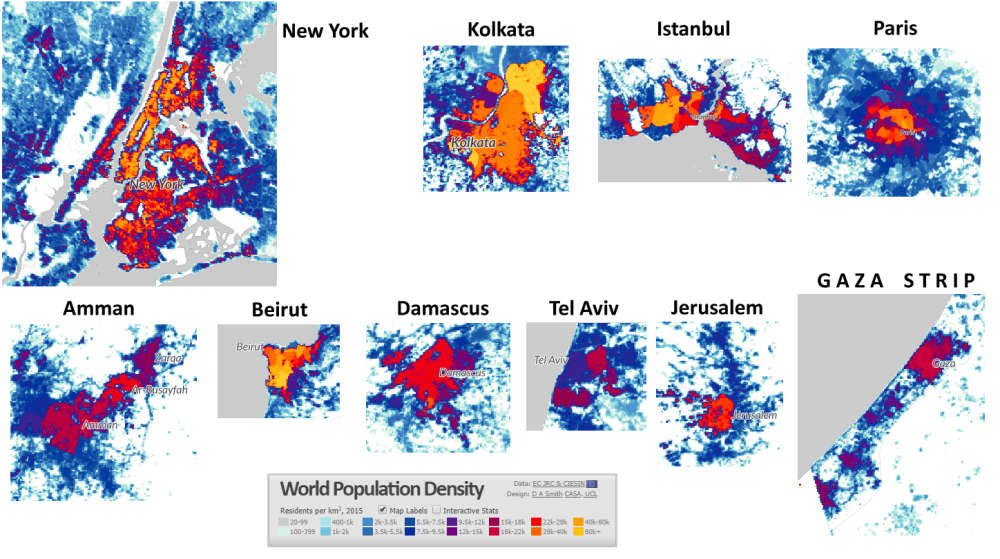
Maps courtesy of European Commission, Global Human settlement: World Population Density.
Desalination in Gaza is not affordable; it requires astronomic investment and operation costs. Expected investments have skyrocketed from 354 million Euros in 2012ii to over 562 million Euros as of today. This amounts to almost 40 percent of Gaza’s $1.46 billion GDP! By comparison, for an advanced economy such as Germany, this plan for one mega-plant of drinking water, at 40 percent of its GDP, would equal the astronomic sum of $1,437,078,240,000 ($1.4 trillion), or 4 years of its entire state budget.iii In any other country, such a sum would be considered outright mad; but only in Gaza is it presented as “feasible” and “sustainable.”
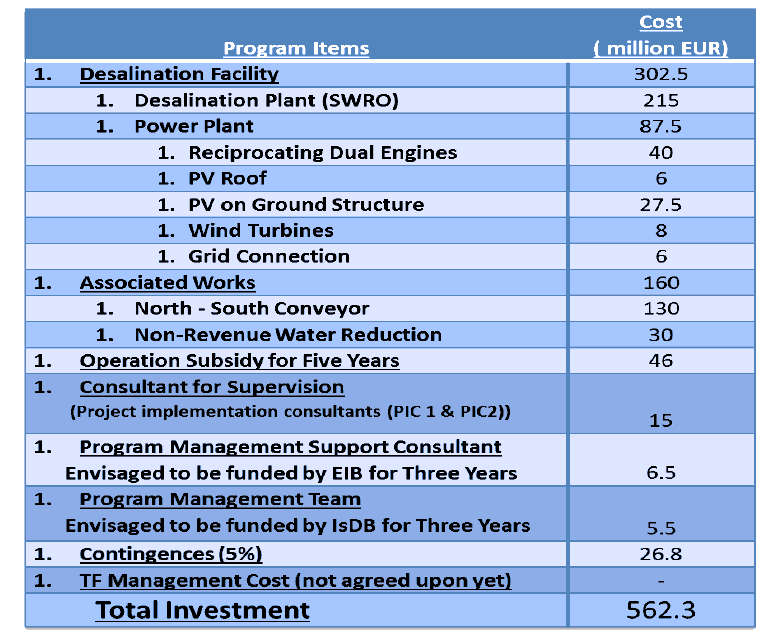
Courtesy of Palestinian Water Authority.xiii
Operation costs: Current, progressive tariffsiv of end consumer prices for water in Gaza range between 0.3 and 2.5 NIS/m3 – unaffordable for many Gazans. Worldwide and also in Gaza, most water-supply costs are administrational, such as management, billing, etc. The second largest element is the distribution network. Only a fraction of this cost is for on-site production, i.e., the pumpage of groundwater from the water level up to the well head (on site), and mostly spent on fuel or electricity used in making it fit for consumption. Reverse-osmosis desalination is purely driven by energy consumption (as it requires pressing saltwater through special membranes), for which current Israeli desalination plants require approximately 4kWh/m3. This equals 12 times the Israeli net expenditure for pumping its water from mostly deep wells – or around 20 times the energy (and therefore cost) required for pumping water from Gaza’s shallow wells.v
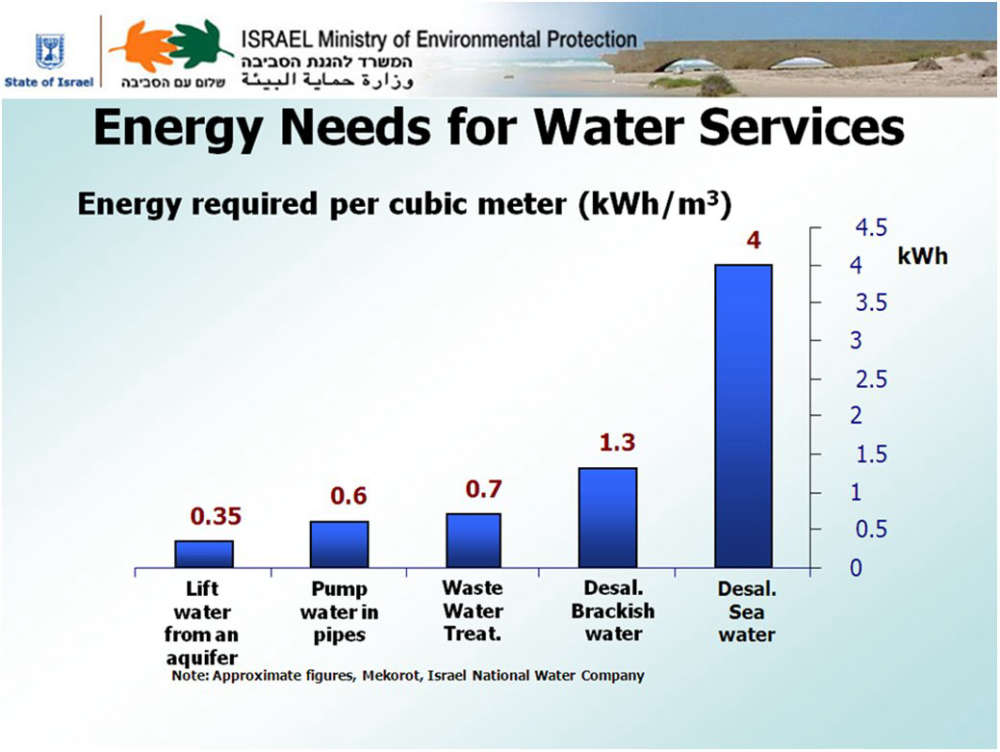
But water quality is possibly the most pressing issue, as 97 percent of domestic wells in Gaza are showing chloride levels above the WHO limit for drinking water (250mg/l). But would desalination solve this problem? The desalination lobby, worldwide and especially in Israel, tries to hide the harsh facts: As desalination removes all salts, also healthy essential salts, the various Israeli medical associations have repeatedly reported that 62 percent of school children and 85 percent of pregnant women in Israel suffer from iodine deficiency. According to the Israeli Ministry of Health, the “heavy national reliance on iodine-depleted desalinated seawater as drinking and irrigating water” points to “a major national public health problem” and raises “clinical concern.” Even worse is the situation with magnesium, which is “critical to the functioning of muscles and the nervous and immune systems.”vi And “the Israeli Health Ministry itself estimates that magnesium-deficient desalinated water is leading to about 250 deaths per year.”vii Just to lend a proportion to the astonishing lack of public outcry: Over the past ten years, seawater desalination by the self-declared world water leader has demanded the lives of 2,500 people. This staggering number is almost twice the number of what the Israeli Foreign Ministry has called the “victims of terror and violence” since the year 2000 – which includes the second Intifada!viii Over the past 10 years, desalination has killed twice as many persons as all violent acts during the past 20 years – a sustainable solution for Gaza?
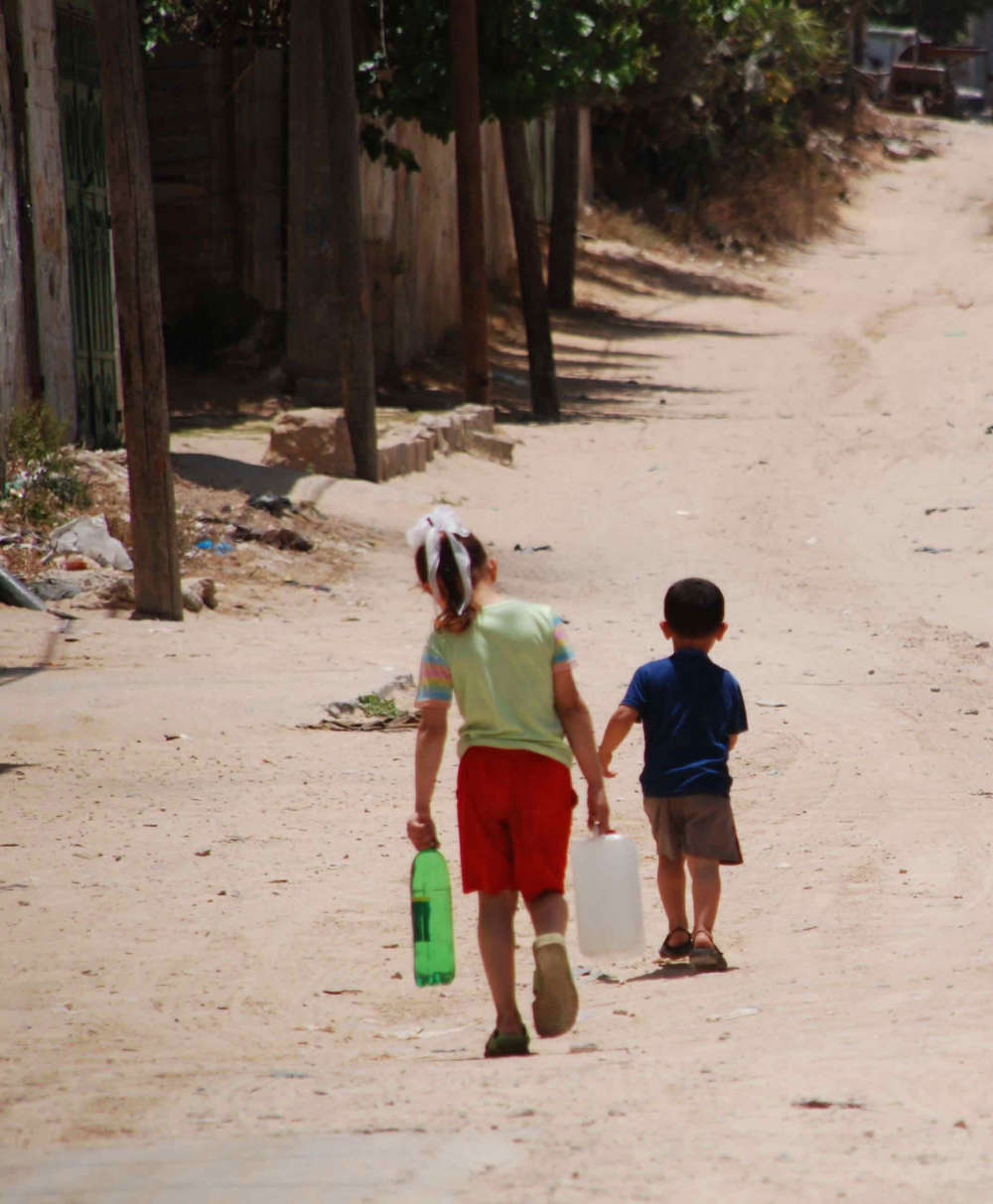
But the claim that desalination would render Gaza “independent” is probably the biggest deceit here, both technically and politically. To rely exclusively on large-scale desalination would render Gaza entirely dependent on the functioning of sophisticated technology. Each one of Israel’s large desalination plants has the energy demand of a city. Optimistically estimated, each cubic meter of the 55mcm processed by such a plant would require 4 kWH of energy. Gaza would have to import gigantic additional amounts of electricity or fossil fuel from Israel! But already, without desalination, constant power cuts have become the most pressing problem of daily life in Gaza, felt even more painfully than the long-standing water malaise! Desalination renders Gaza hostage to energy imports from Israel. Nothing will be improved but replaced by another, graver problem. The official proposal grants Gaza “water independence,” albeit under increased dependency on energy, which is the very prerequisite for desalination! Independence? Gaza’s old well-pumping technology is extremely robust, simple to maintain, operate, and repair – unlike the vulnerable high-tech solution of a centralized mega-desalination plant. Moreover, under grand desalination, all spare parts and operation materials (chemicals) would be subject to exactly the same import restrictions and blockade that currently plague the Gaza ghetto. The same infamous Israeli approach that has been tested in Area A in the West Bank would be brought to Gaza: autonomy without a shred of sovereignty! But the situation here would be even more bizarre. On paper Gaza would be “water-independent,” since it has shining new desalination plants, but in reality, it would remain entirely void of any means to run or maintain them without the good will of the hostile occupier.
In these dark times, let us also not forget the aspect of safety and security. Strategically, we have to account for the vulnerability to upcoming destruction by Israeli warfare. Thousands of dispersed wells were relatively safe from air bombardment, unlike the central power plants that have been repeatedly bombed by the Israeli air force – or the one large central desalination plant in the future! One single bomb and the entire drinking water sector is brought to a halt and damaged beyond repair.
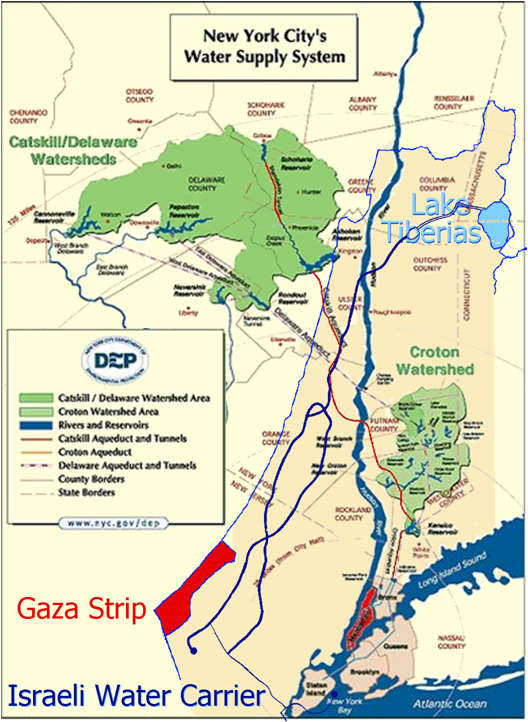
But more important is the political damage. The very slogan “Make Gaza independent!” buys into the Israeli interests, rationale, and narrative, whereby Israel left Gaza (in 2005) and, therefore, is no longer responsible for its survival. Here, the mistaken concept of Gaza as a “country” (let alone, “state”) comes into play and does its damage. Gaza is a city. No city on earth can exist or survive without its hinterland. The very concept of a city, an urban space, by definition is based on the juxtaposition to a rural space, a hinterland that supplies this city with basic resources – food, energy … and water!
It is as simple as that: desalination in no way changes the status of Gaza as a ghetto – but undertakes to make this ghetto viable and sustainable. This is adding insult to injury. A ghetto can never be independent, let alone sustainable. Like any other city on earth, Gaza must be supplied from outside, reliably and sustainably! There is no other way. But the dangerous political implication for grand desalination goes far beyond the water sector. Israel’s chief interest and policy towards Gaza is its isolation, its disconnection from the hinterland, be it Historical Palestine or the West Bank. While settlements in the West Bank grow and the West Bank soon shall be annexed, Gaza, besieged and isolated, should look out for itself.
This is Israel’s policy.
Since its redeployment in 2005, Israel has applied a new and bizarre hydro-geological rationale, whereby the large Coastal Aquifer is not shared, but Gaza allegedly has an aquifer on its own. According to the desal-independence logic, Gaza no longer has the internationally guaranteed right to the internationally shared transboundary water resources from the entire Coastal Aquifer Basin. Its right is restricted to the petty portion under the narrow strip! The desalination promise and logic directly undermines the historical Palestinian water-rights position, which is the only position that complies with international water law: “Equitable and reasonable allocation of transboundary water resources” or in lay terms: Gaza must get more water than it can pump from within. However, the grand desalination proposal presented to Gaza gives up on any supplies from outside! The surely unintended but nevertheless clear message is: We shall keep Gaza “sustainably” in isolation, without access to its rightful water share!
The solution is a simple and obvious yet far-reaching proposal. Gaza must be supplied from the outside like any city on earth. Ironically, the water-rich West Bank – not a city – buys ever increasing quantities of water from Israel, currently 60mcm/yr.x Gaza does not. The first step of this modest, moderate proposal is entirely pragmatic. Allow Gaza to buy 60mcm/yr from Israel – the same amount that the grand desalination project proposes (and the West Bank currently purchases). This water will be expensive and would have to be subsidized by donor states,x but this scheme would be only temporary and should end in the hopefully near future. Inevitably, the water would come through Israel’s National Water Carrier (NWC), which for over 60 years has been pumping dry the Jordan River at Lake Tiberias. By this Israeli supply scheme, in effect, the Jordan River – pumped at Tiberias and through the NWC to Beer Sheva – is already flowing right to the doorstep of Gaza.
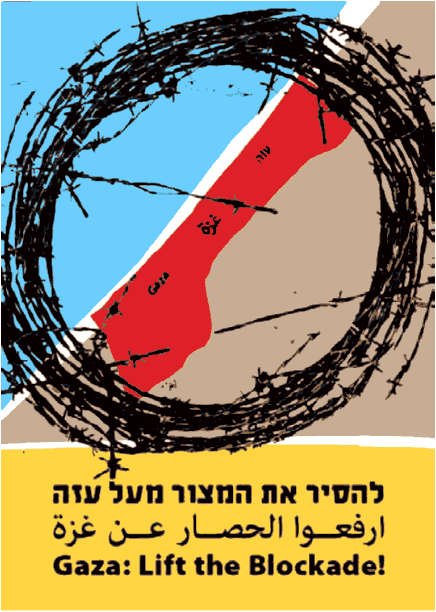
Courtesy of WoBorders, WordPress.com.
A second political step then has to return to the historical Palestinian position: equal water rights, equitable share on shared transboundary basins (under the 1954 Johnston Plan, the Palestinian share on the Jordan River alone was agreed upon as 254mcm/yr). This is worth fighting for. And this is not wishful thinking, but quite realistic, because such a purchase deal would create an important precedent by securing the infrastructure and establishing a daily routine under which Gaza is supplied from its hinterland in Israel. Future negotiations over water would be purely financial, not connected to Israel’s “water security” mantra. Financially, this position would understand that Israel delivers these amounts as a compensation for its thefts of water from the Jordan River or any other shared basin. Under such a final-status agreement, Gaza would be supplied free-of-charge or for a nominal, symbolic charge, to be agreed upon. Thus, donor dependency would end, and Gaza would enjoy its fair “equitable and reasonable share” in compliance with international law.xi
The people of Gaza deserve to be treated as Palestinians. Don’t leave them alone, reconnect Gaza and make it sustainable like any other city on earth. Gaza is part of Palestine.
The simple but far-reaching negotiation position and message would be: Gaza is integrated into a final-status deal over every vital aspect, including water! Gaza furthermore benefits by being guaranteed its status as part and parcel of the Palestinian territory and society. If we look beyond the narrow water sector and its technicalities, the greatest achievement of such a pragmatic, yet long-term solution would be political. Only a reconnection of Gaza to the grid, to Historical Palestine (whether we call it Israel or the international Jordan River), can stop the alarming trend and rationale of the Zionist strategic thinking. Gaza is part of Palestine! The last thing Gaza needs is entrenchment of Israel’s cruel policy of disenfranchisement, isolation, separation, bantustanization, permanent siege, and blockade!
i More details in TWiP #219, July 2016.
ii Union for the Mediterranean Secretariat, Gaza Desalination Project “The Largest Single Facility to Be Built in Gaza,” available at http://ufmsecretariat.org/wp-content/uploads/2011/07/Gaza-Desalination-Project-Fact-Sheet-14-May-2012.pdf.
iii For an economy the size of Israel’s, this would mean US$ 144 bn (if, as in Gaza, 39 percent of GDP is applied).
iv Progressive tariffs usually set different prices for monthly consumption rates.
v Even these 4 kWh-estimates are illusionary in Gaza, because the unit costs at large desal facilities explode when the technical process is interrupted or runs at throttled capacity due to a lack of spare parts, power cuts, etc. – in short, under the typical conditions of Gaza’s ghetto economy.
vi Zafir Rinat, “Watering Crops with Deslinated Water in Israel Leading to Mineral Deficiency,” Haaretz, March 29, 2018.
vii Peretz Darr, “Israel, the Next Flint? Gov’t Dawdling as Desalinated Water Kills,” Haaretz, November 15, 2016.
viii A total of 1,339 deaths have been reported since 2000, according to the MfA website, available at http://mfa.gov.il/MFA/ForeignPolicy/Terrorism/Victims/Pages/In%20Memory%20of%20the%20Victims%20of%20Palestinian%20Violence%20a.aspx.
ix Ramallah city depends to 100 percent on purchases from Mekorot.
x But the water purchase from Mekorot would still be much cheaper than the production costs in Gaza itself.
xi This, by the way, creates an important incentive: Donors for the first time would be directly, financially interested in speeding up negotiations and closing a deal. We all know: donor fatigue is growing, and this is dangerous. So, instead of “getting rid” of Gaza through prohibitively expensive desalination, why not solve Gaza’s water problem through a just, sustainable solution, and in return offer the donors a chance to do away with temporary subsidies?
xii Available at http://www.pwconserve.org/maps/nyc_watersupply.gif
xiii “Gaza Central Desalination Plant and Associated Works Program: Donor Information Handbook,” available at http://ufmsecretariat.org/wp-content/uploads/2018/03/Final-Donor-Handbook_-21-Feb-2018-3.pdf.


